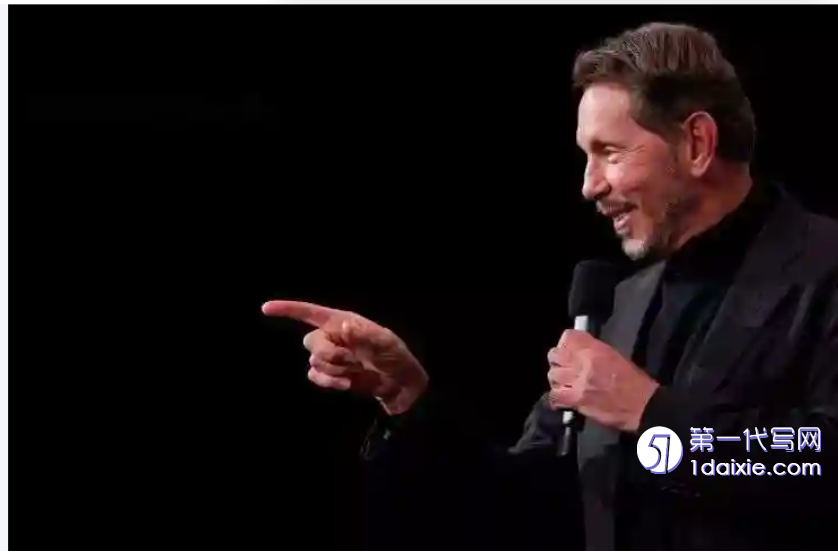本文是一篇英语论文,本文认为,埃里森通过主人公从顺从到觉醒的蜕变,深刻批判了美国社会中根深蒂固的种族歧视与社会压迫现象,同时提出了通过多元文化交往与种族融合实现社会公平的愿景。接合理论的应用不仅拓展了《看不见的人》的批评维度,也为美国非裔文学研究提供了新的理论视角。
Chapter 1 Introduction
1.1 Ralph Ellison and Invisible Man
Ralph Ellison was a renowned African American writer and made significant contributions to literature concerning racial issues. Invisible Man, his masterpiece, was the first novel to win the National Book Award by an African American author.
1.1.1 About the Author
Ralph Ellison (1913-1994) was recognized as one of the greatest African American writers. He was awarded numerous prizes in his lifetime. In 1953, he won the famous US National Book Award for Fiction. Besides, he also received other literary awards, such as the National Medal of Arts in 1985, the Anisfield-Wolf Book Awards in 1992. What’s more, he was admitted to the American Academy of Arts and Letters, and received two President’s Medals from Lyndon Johnson and Ronald Reagan and a State Medal from France.
Ralph Ellison’s early experience made great contributions to his literary aptitude. He was born in the border of Oklahoma City, Oklahoma, a place without much infliction of racial discrimination. And his parents wanted him to be the second Ralph Waldo Emerson. He had been fostered to read by his father since his childhood. Also, under the influence of his family, Ellison was exposed to music from an early age. He learned and mastered the trumpet and horn, and even considered a career in music during his teenage years, which set a stage for his literary creations, especially in using rhythm, tone, and sound effects. Influenced by this kind of environment, it could be said that he was surrounded with music, literature when he was still young. Naturally, he gradually cultivated a deep appreciation for literature.

1.2 Literature Review
Ralph Ellison is the first African American to win the American National Book Award because of Invisible Man. It illustrates a man who lives an invisible life in the society and searches for his identity from a state of dependence to a state of independence. Its abundant academic values attract the interests of scholars abroad and in China.
1.2.1 Studies Abroad
When Invisible Man was published in 1952, it raised American scholars’ attention. Many scholars used various methodologies to publish lots of book reviews and academic papers about Invisible Man. Scholars abroad mainly have studied it from the aspects of comparative literature, themes, new historicism, rhetorical criticism, race and carnival theory involved and have achieved abundant research results.
Some scholars focused on the aspect of themes. Raymond M. Olderman(1966) in Ralph Ellison’s Blues and “Invisible Man” thought Ellison created an attractive and powerful voice of the protagonist in Invisible Man by using blues to express his pain, contradictions, hope and freedom. The thesis also indicated Ellison showed his complex understanding of American society, race, democracy, art, and he used blues to challenge and transcend the limitations of reality in Invisible Man. Roberta K. Gibboney(1997) in Philanthropy in Invisible Man discussed the theme of philanthropy and analyzed the influence of different philanthropists and charitable conducts on the protagonist in Invisible Man and how Ellison exploited these description to express his view.
Chapter 2 Articulation: Formation of a Self-hatred Racial Consciousness
2.1 Emergence Linked to White Hegemony
According to Laclau and Mouffe, articulating elements is “an attempt to dominate the field of discursivity,..., to construct a center”(Laclau & Mouffe, 1987:112). Although Slavery was formally abolished after the American Civil War, systemic racial hierarchies persist. Black communities continue to endure physical subjugation and segregationist practices, while White-dominated social norms permeate every sphere of Black life, denying true emancipation. In the novel, the protagonist passively takes in and accepts White ideological indoctrination in education and White social values because of the connection between the protagonist and White hegemonic social hierarchy norms under that political and historical background. He tries to get yeses from the Whites by obedience. Therefore, he gradually commences the embracement of all aspects pertaining to White people, while expressing strong disapproval of any actions or remarks Black people make. In this case, Black self-hatred begins to dominate the racial consciousness of the protagonist. The emergence of his self-hatred mainly manifests in his experiences before, in and after the battle royal by the connection of articulating with White social hierarchy norms.
His self-hatred originates from an conscious attempt of White norms before the battle humiliation ritual through articulation. Before the battle, the White authority forces the protagonist and his Black companions to watch a performance featuring naked White blondes. Whether they choose to comply or resist, they face threats and coercion from the Whites. After enduring this humiliating experience, the protagonist reflects, “there was nothing to do but what we were told”(21)1 , highlighting their powerlessness and the inevitability of submission to White authority through connections with White social hierarchy norms. This enforced visual submission is not only physical coercion but also indoctrination through his mind. He believes he can only be successful and recognized by getting rid of Black identity. This internalized self-hatred finds roots in his grandfather’s dying words, which are alienated by him into strategy to survive. The words aid him to form the twisted racial consciousness: while admitting the absolute authority of White people, he simultaneously feels “superior to them”(18) through his close connection with White norms. In his view, his Black companions who are radical and rude are inferior to him, and he only deserves to work with the White under the influence of his grandfather. In the view of Stark(1973), the tragedy lies in his unconsciousness—the more strenuously he follows White norms, the deeper he sticks in self-negation. At present, the White social hierarchy norms is strongly articulating with the protagonist to produce his self-hatred. In a word, he is a traitor with black skin but a white mentality and hates the fact that he is a Black colored man.
2.2 Development Temporarily Intensified by White Hegemony
Articulation is “any practice establishing a relation among elements ... The practice of articulation, therefore, consists in the construction of nodal points which partially fix meaning”(Laclau & Mouffe, 1987:105,113). The articulation here means the practice of establishing relations which will change the meanings of these elements among elements. The fixation of these relations is temporary because the meaning here is fluid and variable. The social meanings are rebuilt and reshaped by constant articulations. In Invisible Man, the protagonist has had articulations with White social hierarchy norms and has formed Black Self-hatred during battle royal period. In the following college period, the protagonist further forms nodal points with Mr. Norton and Dr. Bledsoe to further temporarily consolidate Black self-hatred under the deeper relations with White social hierarchy norms.
Chauffeuring the White philanthropist, as an element of the articulation, cements his delusion of transcending Blackness through White approval. White social hierarchy norms continuously play an important role for the protagonist in the new college surroundings. The new environment provides the protagonist with elements to produce relations. The event of being appointed as the driver of the White donor, Mr. Norton is the new element to perform the practice of articulation to partially fix his racial consciousness through the construction of this nodal point. This identity becomes the element of the construction of this nodal point of linking White authority and Black inferiority to fix his racial consciousness partially. In his view, being a driver of Mr. Norton is proud, because Mr. Norton is the symbol of greatness, carrying the responsibility of the White to lead the Black. Here, the great image of Mr. Norton becomes an element to construct the nodal point to partially fix his racial consciousness.
Chapter 3 Dis-articulation: Disintegration of a Self-hatred Racial Consciousness........ 25
3.1 Mitigation after Realization of Southern White Oppression .......................... 25
3.2 Tensions between Black Self-hatred and Northern Multiculturalism ............. 28
3.3 Dissolution via Northern Revelations .............................. 31
Chapter 4 Re-articulation: Affirmation of a Dual African American Racial Consciousness ......... 34
4.1 Inception amid Renewed Struggle .............................. 34
4.2 Reconstruction through New Articulation ................. 41
Conclusion ............................. 48
Chapter 4 Re-articulation: Affirmation of a Dual African American Racial Consciousness
4.1 Inception amid Renewed Struggle
Laclau and Mouffe assert hegemony as “the diverse attempts at recomposition and re-articulation which, in overcoming this original absence ... ‘Hegemony’ will be ... the response to a crisis”(Laclau & Mouffe, 1987:7). The hegemony here is not the hegemony in a universal meaning but an absent whole that needs to be re-articulated and re-constructed in a process. It is a process of building the social dominating discourse dynamically. Here, it is a strategy to the crisis. In other words, when the social structure is not stable or fluctuating, it is a process of all kinds of social powers trying to construct new articulations of meanings to maintain the stability of the social structure. In Invisible Man, the experiences in the north make the protagonist realize that northern White society still has the phenomenon of racial discrimination but also he experiences the kindness of his Black compatriots like Mary. These experiences have the articulations with the protagonist. Therefore, he develops a trend of new racial consciousness, which lets him gradually get rid of Black self-hatred. However, there must be the vacancy of the racial consciousness with the disintegration of Black self-hatred. It stimulates the protagonist to keep going deep into the society to achieve his next racial consciousness. With it being vacant, his deeper research into the north of America aids him to develop a new one by finding hegemony.

Conclusion
On the basis of Ernesto Laclau and Chantal Mouffe’s articulation theory, the thesis makes a systematic analysis of the dynamic evolution of the protagonist’s racial consciousness in Invisible Man. The process can be divided into three interrelated phases: the articulated formation of Black self-hatred, its dis-articulated disintegration, and the eventual re-articulated affirmation of African American’s Double Identity.
According to Ernesto Laclau and Chantal Mouffe’s articulation theory, the protagonist’s formation of his self-hatred is the result of articulation to construct a center and to further partially fix meanings through the construction of the various nodal points in the racially segregated South. The protagonist’s articulation with elements to construct a center is mainly epitomized in his experiences, such as the battle royal—a ritual of humiliation orchestrated by White patrons of his Southern school. White ideology in education and White values are passively accepted by the protagonist through his articulation with White social hierarchy norms under that political and historical background. His validation by White people—an internalized hegemonic recognition—demonstrates his strong opposition against Black people’s behavior and remarks. Therefore, the protagonist appears in a state of Black self-hatred. The protagonist’s articulation with elements to further partially fix meanings is mainly demonstrated in his college period of his encounter with Mr. Norton and Dr. Bledsoe. Under the articulation with White social hierarchy norms, the protagonist further articulates with Mr. Norton and Dr. Bledsoe to construct the nodal points to fix his racial consciousness. His admiration for everything of Mr. Norton, the White donor of the school, and for the success of Dr. Bledsoe, articulates with the protagonist to further partially fix his self-hatred.
reference(omitted)
